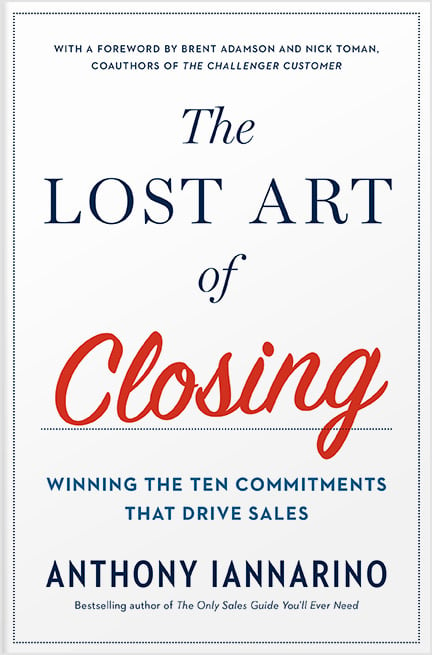You’ve had a meeting or two with your dream client. They’re engaged, and you have developed an excellent understanding of their needs. At the end of your last meeting, they asked you to send them pricing and a proposal and told you they’d have a meeting with you in two weeks after they’ve had a chance to review what you send them.
The chirping you hear are the crickets that the Gods of Sales have sent as a plague against your pipeline, a punishment for your ceding control of the process and failing your dream client (you have left them alone to figure things out for themselves). You are now chasing them, a desperate stalker begging for a meeting.
If you are going to argue for a meeting, you want to do it while you are in a meeting. Waiting and chasing does nothing to improve your odds.
Who Leads This Dance?
In a choice between you leading your client through the process of making a decision to change or allowing them to lead, the responsibility to lead belongs to you. You can, no doubt, collaborate and bring your client into that process with you, improving their buy-in and both of your results. Or you can allow them to lead, even though they lack your knowledge and experience.
Your dream client buys what you sell infrequently and for a single company. You frequently sell your solution and help many different people and lots of different companies, giving you a distinct advantage in situational knowledge. You know what works when it works and when it doesn’t, and why you might do one thing instead of something else.
If someone should be leading, it should be you. It’s your responsibility, even if your dream client is trying to drive. There is a reason we call what we do “selling.” You have to sell a meeting, then you sell the process (a series of other meetings and commitments), and then you sell your solution.
The Time to Sell a Meeting Is Before You Lose Control
The time to sell the meeting is before you lose control of the process. The time to sell the process is when you are sitting across from your contacts. If you are going to trade value (an idea you will find in The Lost Art of Closing: Winning the 10 Commitments That Drive Sales), your rationale for the meeting and what your dream client gains by saying yes, is before your contact tries to take control of the process. You recommend the next steps and share how it benefits your client. No more pushy sales tactics. The Lost Art of Closing shows you how to proactively lead your customer and close your sales. 
If you miss the window and your contact tries to take control of the process (something they may not even be aware they are doing), you have to try to take it back by arguing your case for a meeting (without being argumentative, but by being a combative diplomat).
You gain nothing by ceding control. You leave your dream client in a worse position, knowing they cannot answer their questions or resolve their concerns. They are also unlikely to be able to answer questions from their peers, and you should not expect them to sell the deal for you. You do, however, have a lot to lose.
“Can I make a recommendation? Some people on your team may have concerns that we haven’t addressed or need us to change something. What often helps is to have us come in at the end to answer their questions, so they can be 100% confident in the solution. How do we do that?”
Losing Without a Fight
There is a difference between being likable and needing to be liked. It is helpful to be likable, the kind of person people with whom people want to do business. Being smart and likable is an excellent combination. What is not helpful is needing to be liked, which means “conflict-averse,” unwilling to have difficult conversations when that is what is required. Being smart isn’t enough to make up for an unwillingness to engage in the conversation about what comes next.
Look, you are going to leave some meetings without another meeting securely locked on your client’s calendar. However, there is no reason to give up without making a strong case for doing what you know to be right and preventing your dream client from skipping steps and avoiding the conversations they need to have to get what they want in the future. You gain nothing by giving up and giving in without giving your best effort in securing the next meeting.
A Greater Challenge Later
It’s no more comfortable having the conversation about what your dream client needs to do later, after time has gone by and you have spent months chasing them across time and space, both of you older and neither of you any wiser. Arguing your case with your dream client’s voice mail isn’t wildly effective, nor is making your case over email, where your note will quickly slip off the screen and forgotten.
There is no scenario where waiting to have this conversation makes it easier for you to gain the commitment you need. It may, however, make it more difficult after your contacts have had conversations without you present to help them.
If you have a choice between doing what is right and doing what is easy, do what is right. Doing what seems easy makes things more difficult in the long run.
Trade enough value that you deserve a yes, and then ask. If you don’t get a yes, restate the value and ask again.








.jpg?width=768&height=994&name=salescall-planner-ebook-v3-1-cover%20(1).jpg)


